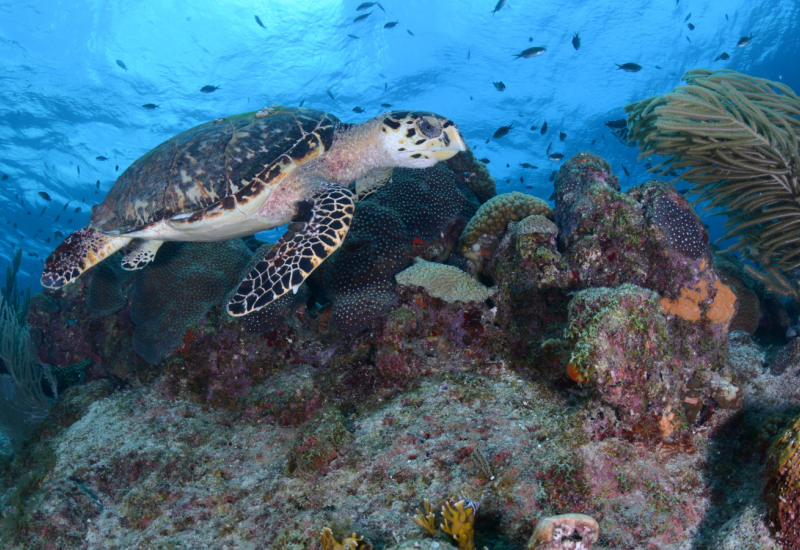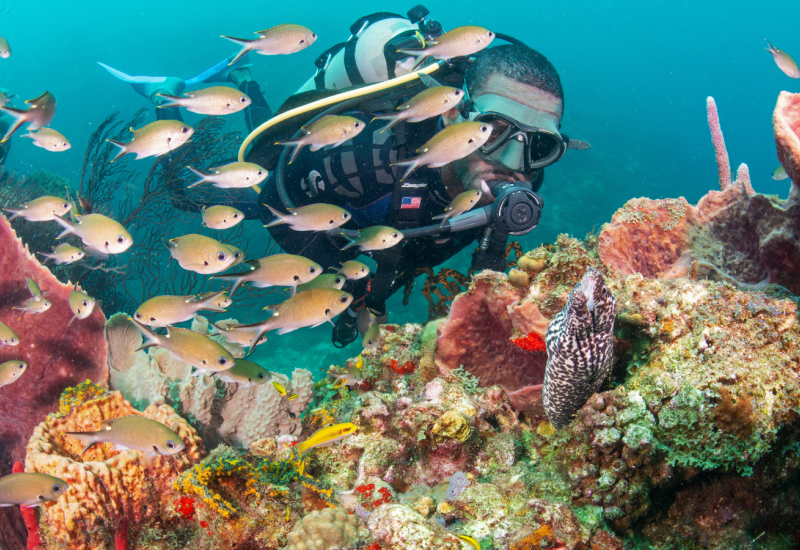Best of Scuba Diving's Secret Spots
Pssst ... these dive locations are well off the beaten path, but we're letting out the secret. Here are the best of Scuba Diving's Secret Spots that every diver will want to explore.
Want to explore more secret scuba spots? Visit the Travel section of our website!

Mirko Zanni
A Rare Glimpse by Mirko Zanni
To photograph Cuban crocs, first you’ve got to find them.
The Cuban crocodile — Crocodylus rhombifer — is a small species, and a close encounter can leave one emotional. To dive with this crocodile is very difficult — first, it is rare, found only in Cuba’s Zapata Peninsula. Second, access to the jungle cenotes where it makes its home is difficult; you need to know the area and must rely on local people for help. But if you manage to pull it all together in these fresh green waters, it’s a truly unique experience.

Francis Pérez
Cities in Dust by Francis Pérez
Sculpted by nature, almost a million years ago.
North of Tenerife, in the Canary Islands’ protected area called Acentejo, is this basalt formation, La Rapadura. During an eruption, lava basalt came into contact with the sea, forming the spectacular structure. Erosion has caused some columns to fall to the base, nearly 165 feet deep. This is the biggest-known columnar disjunction in Spain — diving here is like flying over a medieval city in ruins.
Go Now ECOSUB

Janne Suhonen
Mine Sweepers by Janne Suhonen
Far below Helsinki lies an underworld playground.
Ojamo lime mine is about 40 miles west of Helsinki, Finland. Today the water-filled mine looks just like any other small forest lake. Under- ground, the tunnels stretch for miles. The shallowest start at a depth of about 90 feet — the mine reaches a depth of more than 800 feet at the bottom of the main shaft, with tiny tunnels and huge mining halls throughout. Although Ojamo is a very popular diving site in Finland, some sections have been seen by only a handful of divers, since they are located at a depth of almost 450 feet. Bring your drysuit with you: Decompression in 39-degree water takes hours.
Go Now KAIVOSSUKELTAJAT.COM

Jason Bradley
Many Moons by Jason Bradley
An Alaskan dive site called Smudges just might be the best jelly dive anywhere
Jelly smacks — as these groups of jellies are unofficially called — are seasonal, but their emergence is predictable to an extent. Finding them consistently, in terms of place and time of year, is challenging — from year to year, conditions change: Currents shift, temperatures fluctuate, and biology does what biology does. But the crew of Nautilus Swell (the only live-aboard unfortunately no longer offers this itinerary in southeast Alaska) discovered a dive site they call Smudges. On the northeastern side of Baranoff Island, there is a narrow canyon that they bring divers to during the summer months to have an otherworldly jelly experience. The numbers of moon jellies there are massive, among other species of jellies.
Go Now NAUTILUSSWELL.COM

Tobias Friedrich
Icebreaker by Tobias Friedrich
Diving with arctic giants in East Greenland,
There are only a few places left on Earth that are nearly undiscovered when it comes to diving. East Greenland is one of them. A single dive operator provides a boat and tanks for a few weeks only in summer, when icebergs drift down the coastline from the North Pole, and whales arrive. Humpbacks, fin whales and orcas are often seen in the 27- to 35-degree F waters. Most of the dive sites in East Greenland are still being explored, as well as the life that is hidden under the kelp forests in these waters.
Go Now: Northern Explorers

Reinhard Dirscherl
Cousteau's World by Reinhard Dirscherl
Experience diving on a coral reef ghost town in the Red Sea.
To dive the Red Sea reefs of Sudan is to walk in the footsteps of the great dive pioneers. Jacques-Yves Cousteau’s experimental underwater village — Precontinent II, at Shaab Rumi — is one of the underwater secrets of Sudan. After more than 40 years, divers can now inspect the mushroom-shaped submarine-docking station inside and out, and other relics of Cousteau’s expedition. Close to Cousteau’s underwater city we found two magnificent shark cages, now fully covered with colorful soft corals.

Tobias Friedrich
Twilight Zone by Tobias Friedrich
Comino Island’s Santa Maria caves are an otherworldly Mediterranean Sea experience.
Divers come to the Maltese island of Comino to drop down in its blue waters and explore the 10 caves collectively known as Santa Maria. A dive light is necessary to negotiate the numerous swim-throughs, cave openings and tunnels, and to spot the locals — nudibranchs, crabs, octopuses and moray eels. Comino sits between the bigger islands of Gozo and Malta, and has a permanent population of four residents.
Go Now Nautic Team
Pssst ... these dive locations are well off the beaten path, but we're letting out the secret. Here are the best of Scuba Diving's Secret Spots that every diver will want to explore.
Want to explore more secret scuba spots? Visit the Travel section of our website!










